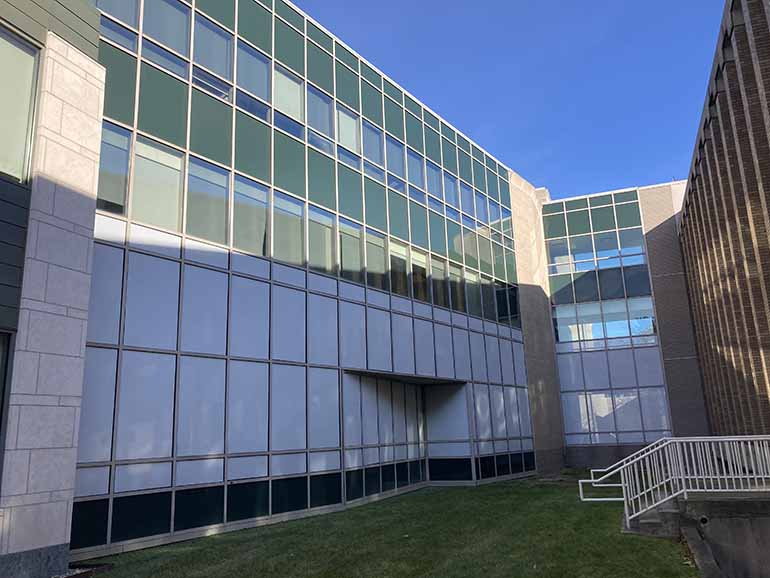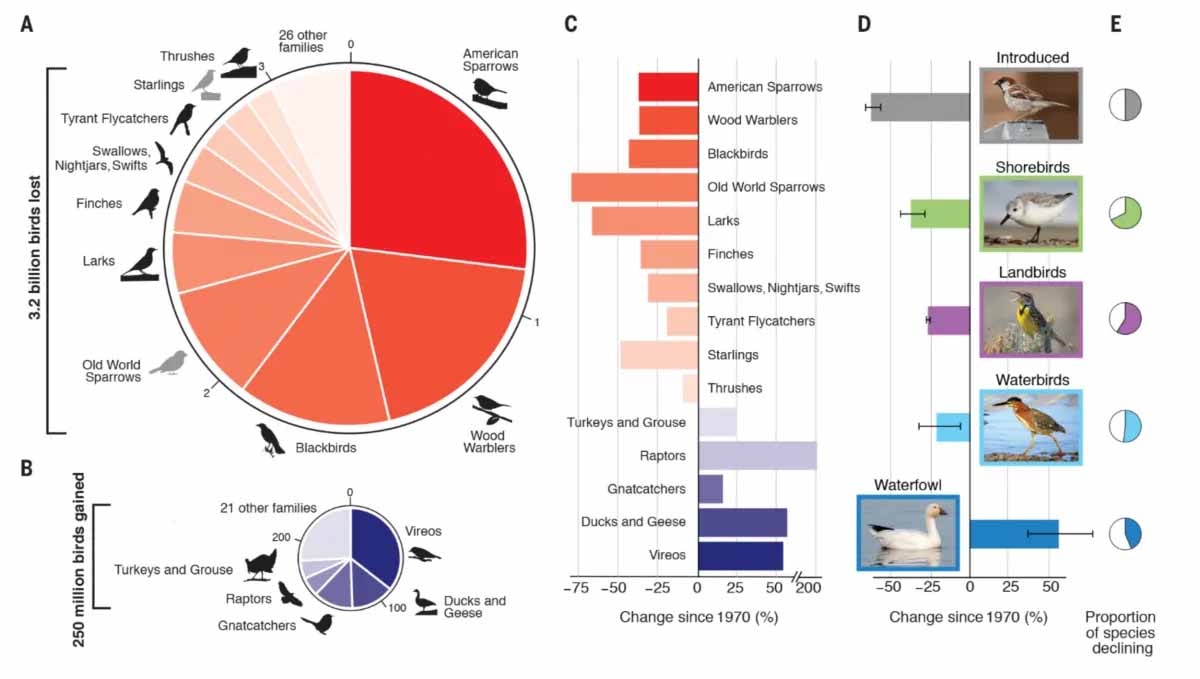DETROIT – Wayne State University’s beautiful campus and its greenspace is a big draw to birds in the area. Unfortunately, its several low-rise buildings with extensive and uninterrupted glass are known factors in bird-window collisions.
That combination – and Wayne State’s status as a major research university – makes campus an ideal location to study minimizing bird mortality due to window strikes.

Thanks to a grant from the Detroit Zoological Society, Wayne State is now working with Detroit Audubon – soon to be Detroit Bird Alliance – to reduce bird window collisions by applying CollidEscpape, an adhesive film that reduces reflections outside. The project has begun, with application of the film – which has little impact on the view from inside – on first and second floor windows in the Law School.
“Most people don’t know that these collisions are the second-highest source of direct human-caused mortality of birds, surpassed only by outdoor cats,” said Ava Landraf, conservation and research coordinator with Detroit Audubon. “Bird-window collisions can be broken down by building type, with roughly 56% of mortality at low-rises, 44% at residences, and less than 1% at high-rises. This breakdown highlights the importance of focusing on low-rise and residential buildings as opposed to high-rise buildings and skyscrapers, which are commonly associated with collisions.”
Ashley Flintoff, director of planning and space management in Facilities, Planning and Management (FP&M), says faculty and students have contacted FP&M with concerns about bird strikes over the years, but the opportunity to do something about it never materialized. That changed when Michelle Serreyn – a WSU alumna and member of the WSU President’s Standing Committee on Environmental Issues – who now works for the Department of Natural Resources, contacted Wayne State about partnering with Detroit Audubon for the grant.
The Law School building was selected for the project based on findings from Detroit Audubon volunteers who walk campus to track bird strikes.
“Surveying involves walking a route around buildings and checking for dead or injured or stunned birds,” said Landraf. “This surveying takes place in the spring and fall, when birds are migrating. Since most birds migrate at night and early morning, surveying is best done in the morning to avoid the birds being taken by a scavenger or removed by a cleaning crew. Throughout the migratory seasons, the number of birds found each day is variable. Some days, we find zero birds but some days we can find up to 10 dead or injured birds around campus windows. However, the number of birds found is likely far fewer than the number of birds that actually die from window collisions. Many scavenger species will eat the window-strike birds, and some animals have even learned to wait along windows for an easy meal.”

Flintoff hopes this pilot study will result in additional grants from the Detroit Zoological Society that allow the university to apply CollidEscape to other university buildings. If that happens, the next areas of focus will likely be the Mort Harris Recreation and Fitness Center and the Faculty Administration Building, both of which have large expanses of glass and experience bird strikes.
Nationally, the Smithsonian estimates 600 million birds are killed in window collisions each year. With continued development of human-made structures and the interruption of migratory patterns, the issue of protecting birds is growing more prominent in the construction industry.
“When we had the chance with the Hilberry and State Hall projects, we asked our designers what would it take, what would it cost to install bird safe glass?” said Flintoff. “Since both firms have a pretty extensive emphasis on sustainability and green design, they both looked at it, came back and said the cost would be minimal if it is designed in from the beginning.”
As a result, the top half of the glass wall of the Hilberry Gateway on the Cass Avenue facade has thick vertical stripes. At M. Roy Wilson State Hall, the windows that were replaced have a thin or thick striping.
“What you’re trying to do is disrupt the reflection because the birds fly up, they see a reflection of a tree or natural environment and they think that is a tree I can fly into, and they fly right into the window,” said Flintoff. “You don’t have to do a whole lot, but studies show if you disrupt that reflection just enough, birds don’t fly into the window. There are a number of different patterns you can do on the glass. With the Gateway and State Hall, the vertical stripes fit really nicely with the design of the buildings, so we went with the stripes.”
Window collisions are most common among migratory species such as native sparrows and warblers which are types of birds already facing some of the most drastic population declines.
“We would like to acknowledge and thank Wayne State for their commitment to urban wildlife conservation on their campus,” said Landraf.
TOP PHOTO: Workers apply an adhesive film to windows at the Law School. The film is intended to reduce bird window collisions.